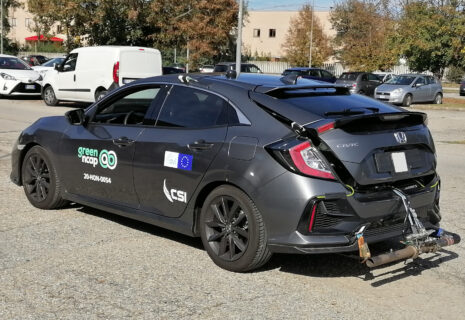Honda Civic 1.0 Turbo petrol 4x2 manual
2021
41%
3.1
10
Clean Air Index
5.1
10
Energy Efficiency Index
4.3
10
Greenhouse Gas Index
| Laboratory Tests | NMHC | NOX | NH3 | CO | PN | |
|---|---|---|---|---|---|---|
| 1.810 | Cold Test | |||||
| 6.410 | Warm Test | |||||
| 0.710 | Cold Ambient test | |||||
| 0.010 | Highway | |||||
| Road test | ||||||
| 5.810 | On-Road Drive | |||||
| 0.08 | On-Road Heavy Load | |||||
| 2.05 | On-Road Light Load | |||||
| 4.25 | On-Road Short Trip | |||||
| 1.02 | Congestion | |||||
| Robustness |
| Laboratory Tests | Energy | |||
|---|---|---|---|---|
| 5.910 | Cold Test | |||
| 6.310 | Warm Test | |||
| 4.410 | Cold Ambient test | |||
| 4.110 | Highway | |||
| Consumption | Driving Range | |||
| Average | 6.6l100 km | 762km | ||
| Worst-Case | 7.6l100 km | 640km | ||
| Greenhouse Gases | CO2 | N2O | CH4 | |
|---|---|---|---|---|
| 3.27 | Cold Test | |||
| 3.87 | Warm Test | |||
| 2.67 | Cold Ambient test | |||
| 2.77 | Highway |
Specifications
- Tested Car SHHFK6760LU00XXXX
- Publication Date 02 2021
- Vehicle Class Small Family Car
- Emissions Class Euro 6d
- Tyres 235/45 R17
- Mass 1,295 kg
- Engine Size 998 cc
- Engine Power/Torque 93 kW/220 Nm
- Published CO2 135 g/km













































































































































Our verdict
A stalwart of the Honda model line-up, the Civic has gone through many generational changes and a new model is expected soon. Here, the car is tested with a 1.0 turbocharged direct-injection petrol engine producing 93 kW and 220 Nm of torque. On the whole, the car does a reasonable job of limiting its emissions, the GPF keeping particulate number in check. However, in the more challenging tests, values of CO and NH3 are high and the car loses points. The car scores better for its energy efficiency and control of greenhouse gases and its average index puts it just into the 2½ star band.